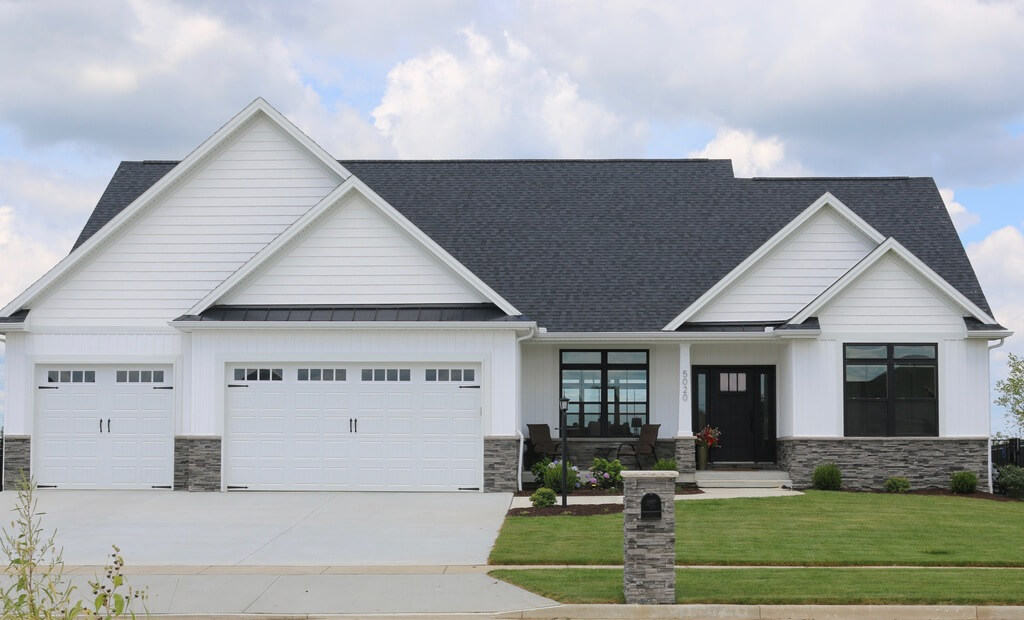White Houses with Black Trim Exteriors

In the realm of architectural design, certain combinations stand as timeless testaments to sophistication and style. One such iconic pairing is the striking contrast of white houses with black trim exteriors. This classic color combination has long been celebrated for its ability to exude elegance, drama, and a sense of timelessness. In this article, we delve into the allure of white houses black trim exteriors, uncovering their design principles, historical significance, and how this aesthetic continues to captivate homeowners, designers, and admirers of architectural beauty.
A Symphony of Contrast
The marriage of white and black on home exteriors creates a symphony of contrast that catches the eye and commands attention. The clean, bright canvas of white serves as the backdrop for the bold, defined lines of black trim. This combination accentuates architectural features, emphasizes dimensions, and adds a touch of drama to the façade. Whether in traditional, modern, or eclectic styles, the white and black contrast delivers an impact that is both striking and unforgettable.
Historical Roots
The appeal of white houses with black trim goes beyond modern aesthetics—it has deep historical roots. This combination was popularized during various architectural movements, including the Colonial Revival and Greek Revival periods. In these eras, the contrast between white and black trim accentuated the intricate details of ornate molding, cornices, and columns, allowing architectural features to shine against a clean backdrop.
Timeless Elegance
One of the remarkable qualities of white houses with black trim exteriors is their enduring elegance. This pairing transcends trends and adapts to different architectural styles, from the simplicity of Cape Cod homes to the grandeur of Victorian mansions. The contrast of white and black trim maintains a sense of timelessness that effortlessly enhances the curb appeal of any residence.
Design Principles
1. Balance and Proportion: When incorporating black trim, consider the proportions of the façade. Use black trim to highlight specific architectural elements, such as windows, doors, and gables, ensuring a balanced distribution that enhances the overall aesthetics.
2. Selecting the Right White: The choice of white is crucial. Opt for a shade of white that complements the style of your home and coordinates with the black trim. Cool whites work well with crisp black trim, while warm whites create a softer contrast.
3. Framing and Definition: Black trim acts as a frame, defining the architectural elements and adding depth to the façade. Use it strategically to outline features and create a visual hierarchy.
4. Accents and Details: Consider incorporating other elements that complement the white and black color scheme, such as outdoor fixtures, hardware, and landscaping. These accents add depth and texture to the exterior.
Modern Applications
While rooted in tradition, the combination of white houses with black trim exteriors has found renewed popularity in modern design. Contemporary homes adopt this classic pairing to create a sleek, minimalist aesthetic. The contrast between white and black resonates with the clean lines and bold geometry of modern architecture, infusing spaces with a sense of sophistication and clarity.
Conclusion
White houses with black trim exteriors stand as a testament to the enduring power of contrast and elegance in architectural design. Rooted in history, this classic color pairing continues to captivate homeowners, designers, and architectural enthusiasts worldwide. By carefully balancing proportions, selecting the right shades, and emphasizing key features, the juxtaposition of white and black trim creates a visually captivating masterpiece that transcends time, trends, and architectural styles.



